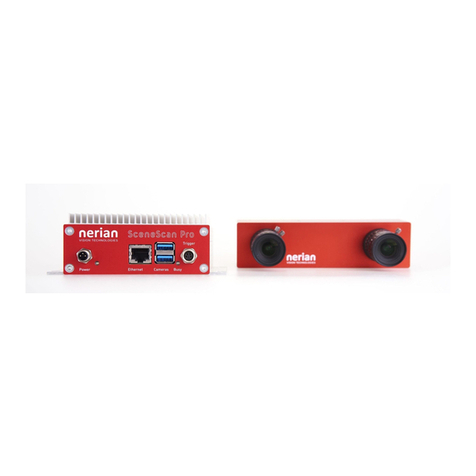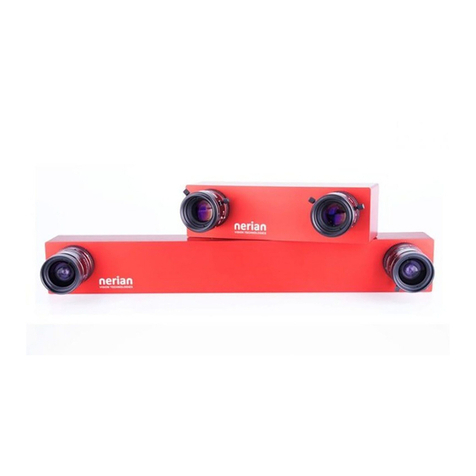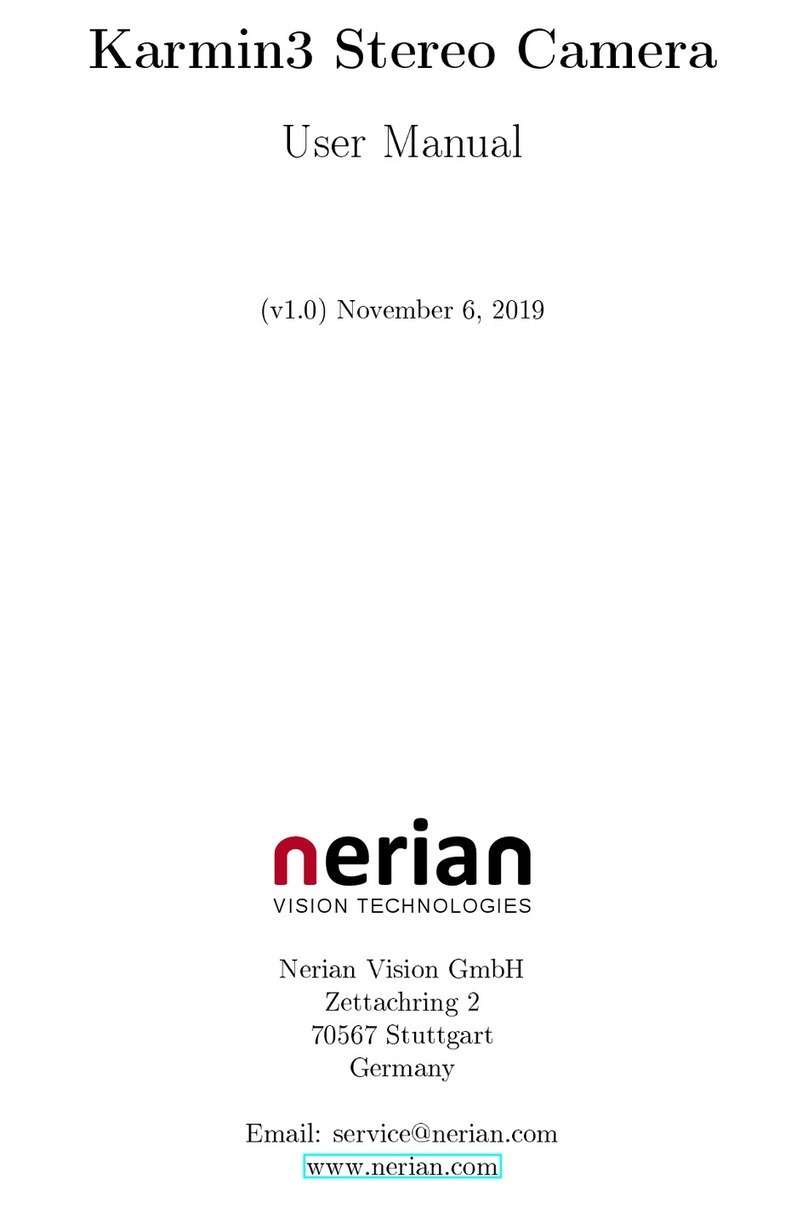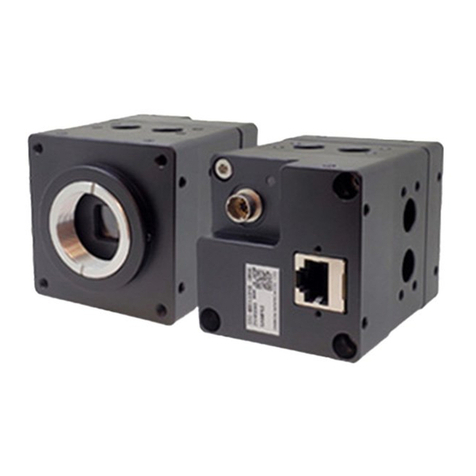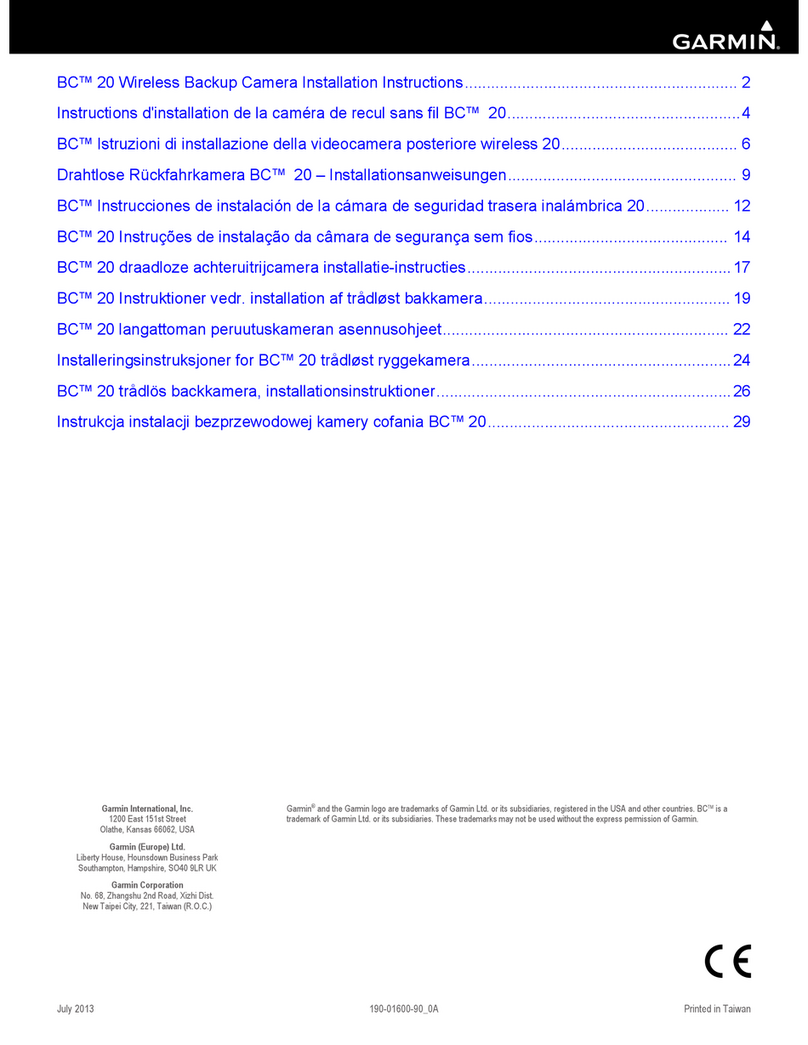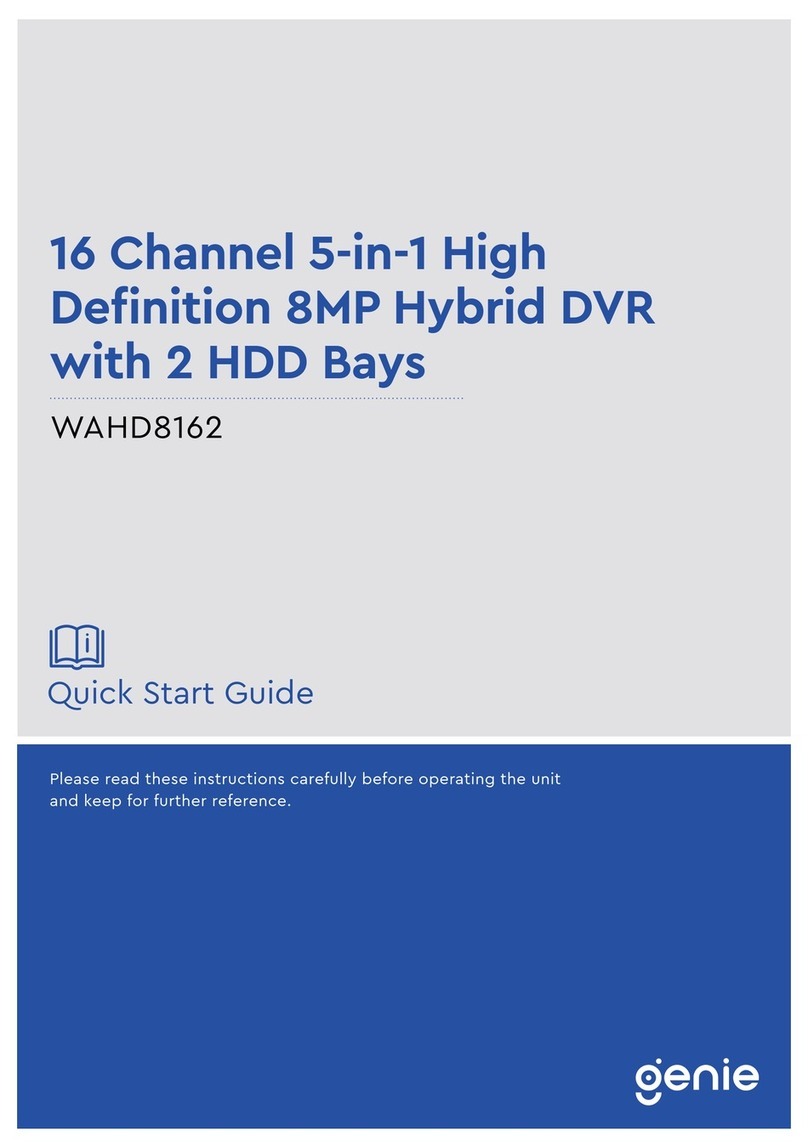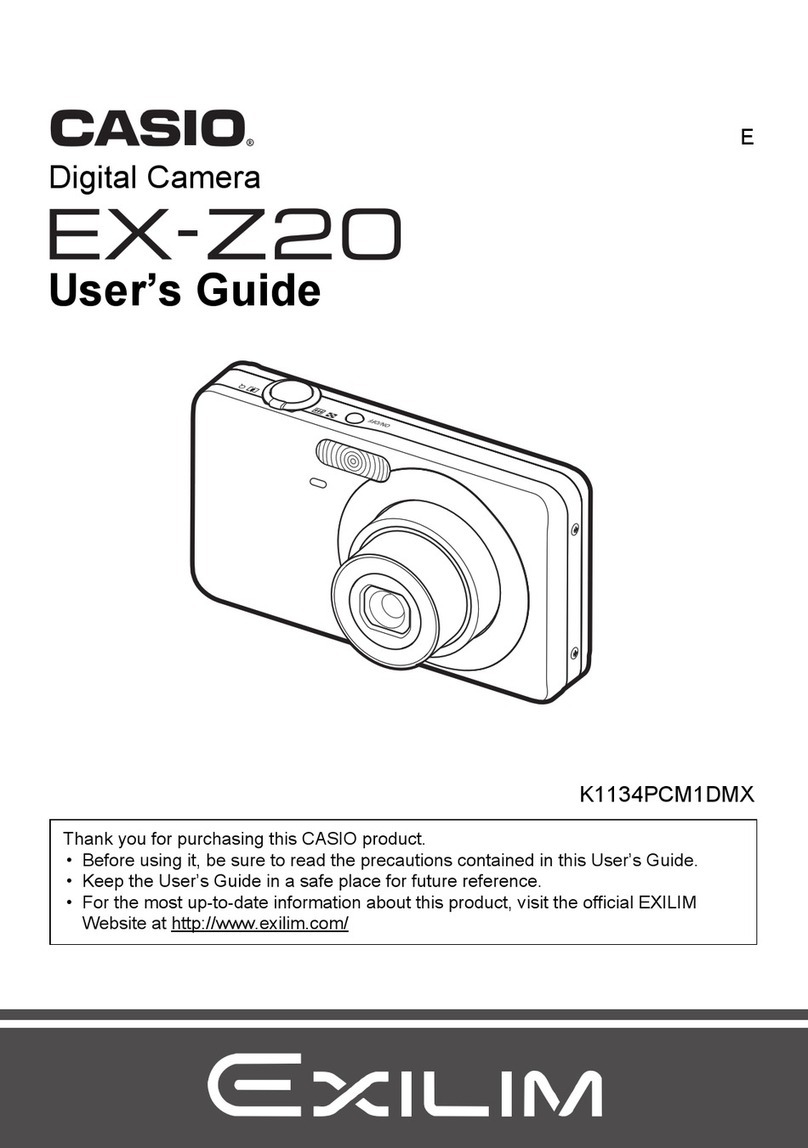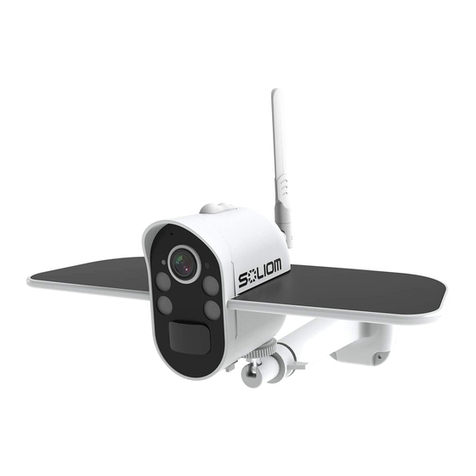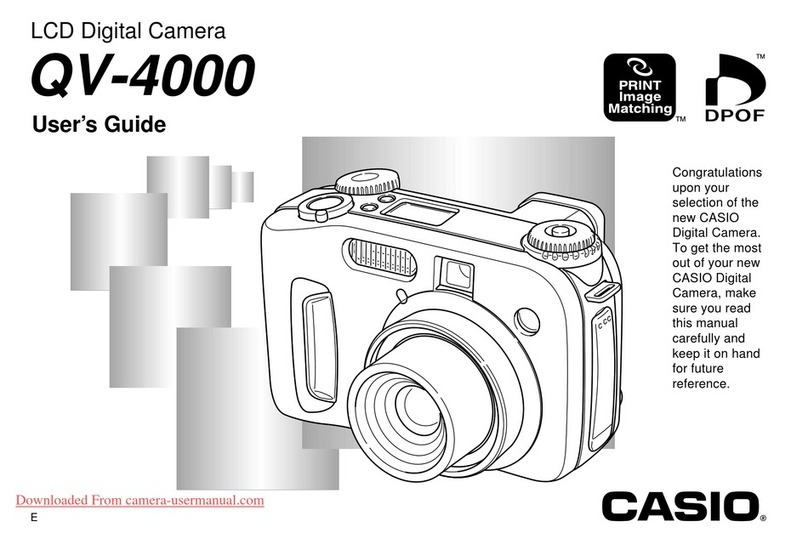nerian Karmin3 User manual

Karmin3 Stereo Camera
User Manual
(v1.1) October 13, 2020
VISION TECHNOLOGIES
Nerian Vision GmbH
Zettachring 2
70567 Stuttgart
Germany
Email: [email protected]
www.nerian.com

Contents
1 Available Models 2
2 Specifications 2
2.1 General Specifications . . . . . . . . . . . . . . . . . . . . . . . 2
2.2 Dimensions and Mounting Holes . . . . . . . . . . . . . . . . . . 4
3 Trigger Port 4
4 Lenses 5
5 Camera Configuration 5
5.1 Pixel Binning and Bayer Pattern Downsampling . . . . . . . . . 5
5.2 Other Camera Settings . . . . . . . . . . . . . . . . . . . . . . . 6
5.2.1 AnalogControl ....................... 6
5.2.2 Image Format Control . . . . . . . . . . . . . . . . . . . 6
5.2.3 Acquisition Control . . . . . . . . . . . . . . . . . . . . . 7
6 Interfacing Karmin3 7
6.1 Connecting to SceneScan . . . . . . . . . . . . . . . . . . . . . . 7
6.2 ConnectingtoaPC......................... 8
7 Support 8
8 Warranty Information 8
1

1. AVAILABLE MODELS
1 Available Models
Karmin3 is available in two different baseline distances: 10 cm and 25 cm. The
10 cm model is intended for close-range measurements, while the 25 cm model
is intended for long-range measurements. The covered measurement range also
depends on the selected lenses and on the processed disparity range, which is
the image overlap range that is searched during image processing.
Both baseline distances are available with either monochrome or color im-
age sensors. When used in combination with SceneScan, the monochrome
versions can achieve higher image resolutions and frame rates. Using the
monochrome models is hence recommended if color information is not im-
portant for subsequent processing.
When using identical lenses and a constant disparity range, the 10 cm
models will have a lower minimum depth when compared to the 25 cm mod-
els. The depth error increases approximately quadratically with the measured
depth, starting at the minimum depth. Hence the 25 cm models will have a
lower depth error for all points that fall within its measurement range. If the
minimum depth of the 25 cm models is sufficient, then these models should be
preferred over the 10 cm models. Detailed characteristics, including the mini-
mum depth, are available on the Karmin3 product page1for the most common
configurations.
2 Specifications
2.1 General Specifications
Sensor resolution 2048 ×1536 pixels
Sensor Sony Pregius IMX265
Sensor format 1/1.8"
Lens mount C/CS-mount
Chroma mono / color
Shutter global shutter
Interface USB 3.0
Trigger-input 4-pin Binder M8 connector
Stereo baseline distance 10 cm / 25 cm
Mounting bottom side 4×M3 threaded hole
1×1/4" UNC threaded hole (tripod mount)
Mounting top side 2×M3 threaded hole
Weight without lenses 350 g for 10 cm baseline
470 g for 25 cm baseline
Conformity CE, FCC, RoHS
1See: https://nerian.com/products/karmin3-3d-stereo-camera/
2

2. SPECIFICATIONS
(a)
(b)
Figure 1: Dimensions and spacing of mounting holes for (a) 10 cm and (b) 25
cm versions of Karmin3. All measurements are provided in millimeters.
3

3. TRIGGER PORT
3
1
24
Pin Assignment
1 Trigger 0 (opto-isolated)
2 Not connected
3 Ground (opto-isolated)
4 Not connected
Figure 2: Pin assignment of trigger connector.
2.2 Dimensions and Mounting Holes
Dimensions of the available models are shown in Figures 1a and 1b. The figures
also include the spacing of the available mounting holes. All measurements are
provided in millimeters.
The top side features two threaded mounting holes with M3 metric threads.
The bottom side features four additional mounting holes with M3 threads, and
one mounting hole with a 1/4" UNC thread for use with tripods. The drill
depth of all mounting holes is 6 mm.
3 Trigger Port
The camera features a trigger port on the backside, which uses a male 4 pin
Binder 718/768 series connector. This connector matches the female trigger
connector on SceneScan and SceneScan Pro.
The following manufacturer part numbers correspond to matching connec-
tors, and should be used for custom trigger cables:
99 3376 00 04 Matching connector with solder termination, not shielded.
99 3376 100 04 Matching connector with screw termination, not shielded.
99 3376 500 04 Matching connector with cutting clamps termination, not
shielded.
99 3362 00 04 Matching connector with solder termination for 3.5 - 5 mm2
cable cross section, shielded.
99 3362 25 04 Matching connector with solder termination for 2 - 3.5 mm2
cable cross section, shielded.
99 3362 100 04 Matching connector with screw termination for 3.5 - 5 mm2
cable cross section, shielded.
99 3362 100 04 Matching connector with screw termination for 6 - 8 mm2
cable cross section, shielded.
The pin assignment of the trigger port is shown in Figure 2. There is one
opto-isolated trigger line named Trigger 0, which correspond to the equally
named trigger signal provided by SceneScan.
By default, Karmin3 is configured such that image acquisition only happens
upon a positive edge of Trigger 0. It is thus necessary to connect Karmin3 to
4

4. LENSES
Table 1: Operating voltages for trigger port.
Voltage Description
−70 –+40 VDC Absolute maximum voltage
0–+30 VDC Safe operating range
Table 2: Maximum allowed lens intrusion.
Mount type Maximum intrusion
CS-mount 5.2 mm
C-mount 10.2 mm (with 5 mm spacer ring)
SceneScan’s trigger port or to an equivalent trigger source. The trigger signal
will ensure that image acquisition of both cameras is synchronized, which is
necessary for processing the acquired image data.
The relevant voltage ratings for the trigger line are listed in Table 1. The
absolute maximum voltage must not be exceeded in order to avoid damages
to the device.
4 Lenses
On the front-side, Karmin3 features two lens mounts for its two image sensors.
The lens mounts are compatible to the CS-mount standard. By using a 5 mm
spacer ring, it is possible to connect a C-mount lens. Karmin3 is shipped with
two spacer rings pre-mounted.
When mounting a lens, it is important that the lens doesn’t intrude farther
than the maximum allowed lens intrusion. If the lens intrudes farther, it can
scratch the dust protection window. The maximum allowed intrusions for
C-mount and CS-mount lenses are listed in Table 2.
5 Camera Configuration
5.1 Pixel Binning and Bayer Pattern Downsampling
For many applications a high frame rate is more important than a high image
resolution. To cover such use cases, the monochrome Karmin3 models can be
configured to use a 2×2pixel binning. In this setting, four sensor pixels are
combined to form one image pixel. Using pixel binning allows the cameras to
operate at a higher frame rate. When used with SceneScan Pro, a maximum
frame rate of 38 fps is possible.
For the color models, SceneScan can perform a combined demosaicing and
down-sampling, which also results in the image width and height being halved.
This is the default operation mode when a color Karmin3 camera is connected
5

5. CAMERA CONFIGURATION
to SceneScan, or when a Bayer pattern pixel format is selected. The com-
bined demosaicing and down-sampling reduces artifacts from the Bayer pat-
tern, which improves the image processing quality.
Switching the camera configuration between full resolution and pixel bin-
ning / down-sampling mode will also affect the covered depth range, if the
disparity range is kept constant. A constant disparity range will cover a larger
percentage of an image that was acquired with active pixel binning, compared
to an image acquired at the native camera resolution. Hence, the disparity
range should be adjusted when changing the pixel binning configuration.
5.2 Other Camera Settings
The cameras provide a multitude of different settings that can be configured
when connected to SceneScan or SceneScan Pro. For a full documentation of
all settings we recommend to consulting the GenAPI standard2. The most
common camera settings are described in the following.
5.2.1 Analog Control
Gain: Gain factor for the image sensor.
Gain auto: Sets the mode for automatic gain control.
Black level: Controls the analog black level as an absolute physical
value.
Gamma: Controls the gamma correction of pixel intensity.
5.2.2 Image Format Control
Width: Width in pixels of the selected Region-Of-Interest
(ROI).
Height: Height in pixels of the selected ROI.
Offset X: Horizontal image coordinate of the top-left corner of
the selected ROI. When configured through Scene-
Scan, this coordinate is measured relatively to the
image center.
Offset Y: Vertical image coordinate of the top-left corner of the
selected ROI. When configured through SceneScan,
this coordinate is measured relatively to the image
center.
Binning horizontal: Number of horizontal photosensitive cells that are
combined for one image pixel.
Binning vertical: Number of vertical photosensitive cells that are com-
bined for one image pixel. There is a conditional de-
pendency to the binning horizontal parameter, which
has to be adjusted first.
2See https://www.emva.org/standards-technology/genicam/genicam-downloads/
6

6. INTERFACING KARMIN3
Pixel format: Desired pixel encoding mode.
5.2.3 Acquisition Control
Exposure time: Sets the exposure time.
Exposure auto: Sets the mode for automatic exposure control.
Trigger selector: Selects the trigger that shall be configured.
Trigger mode: Controls if the selected trigger is active.
Trigger source: Specifies the internal signal or physical input line to
use as the trigger source.
Trigger activation: Specifies the activation mode of the trigger.
Exposure mode: Sets the operation mode of the exposure.
6 Interfacing Karmin3
6.1 Connecting to SceneScan
Karmin3 is intended for use with the SceneScan or SceneScan Pro image pro-
cessing systems. Karmin3 should be connected with a Micro USB 3.0 cable
to one of SceneScan’s USB ports. It is highly recommended to secure the
Micro-USB-connector with lock screws. This requires a locking USB3 cable.
In addition to the USB connection, Karmin3 also requires a connection to
SceneScan’s trigger port. A suitable trigger cable can be obtained from Nerian.
It is alternatively possible to use a trigger source other than SceneScan. In this
case please make sure that SceneScan is configured appropriately and that the
trigger source obeys to the voltage levels listed in Section 3. Figure 3 shows
Karmin3 connected to SceneScan Pro with a USB and trigger cable.
The trigger signal must provide an appropriate trigger frequency that can
be matched by the cameras and the selected SceneScan model. The possible
frequencies for different system configurations are listed in Table 3. In low-light
situations the desired frame rate might not be achieved if the sensor exposure
time is too high. In these cases, an appropriate exposure time upper limit
should be configured in the SceneScan settings.
Figure 3: Karmin3 connected to SceneScan Pro.
7

7. SUPPORT
Table 3: Supported trigger frequencies / frame rates.
Binning / SceneScan Disparity Max. feq.
Demosaicing model range
2×2monochrome binning SceneScan 128 16 Hz
2×2monochrome binning SceneScan Pro 128 55 Hz
2×2monochrome binning SceneScan Pro 256 34 Hz
Demosaicing (color) SceneScan Pro 128 32 Hz
Demosaicing (color) SceneScan Pro 256 16 Hz
Full resolution monochrome SceneScan Pro 128 13 Hz
Full resolution monochrome SceneScan Pro 256 7 Hz
SceneScan will load a suitable camera configuration for Karmin3 after the
initial connection. Please refer to the SceneScan / SceneScan Pro user manual
for information on the possible configuration options.
6.2 Connecting to a PC
When connected to a PC, Karmin3 will appear as two individual USB3 Vision
cameras. Using Karmin3 with a PC is not officially supported. This is why an
official API or example programs are not available. However, Karmin3 is com-
patible to machine vision software that supports the USB3 Vision standard.
7 Support
If you require support or if you have other inquiries that are related to this
product, please contact:
Nerian Vision GmbH
Zettachring 2
70567 Stuttgart
Germany
Phone: +49 711 2195 9414
E-mail: [email protected]
Website: www.nerian.com
8 Warranty Information
The device is provided with a 2-year warranty according to German federal
law (BGB). Warranty is lost if the housing is opened by others than official
Nerian Vision Technologies service staff. In case of warranty please contact
our support staff.
8

Revision History
Revision History
Revision Date Author(s) Description
v1.1 October 13, 2020 KS Updated frame rate recommen-
dations
v1.0 November 6, 2019 KS Initial revision
9
Other manuals for Karmin3
2
Table of contents
Other nerian Digital Camera manuals
Popular Digital Camera manuals by other brands
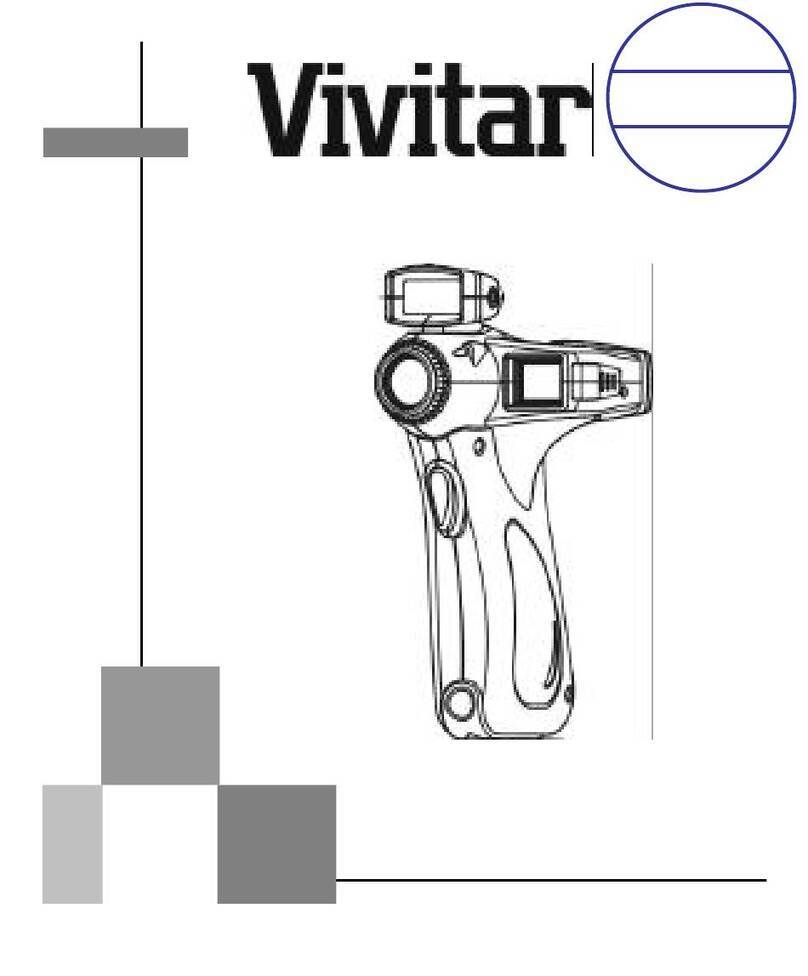
Vivitar
Vivitar Vivicam 60 instruction manual
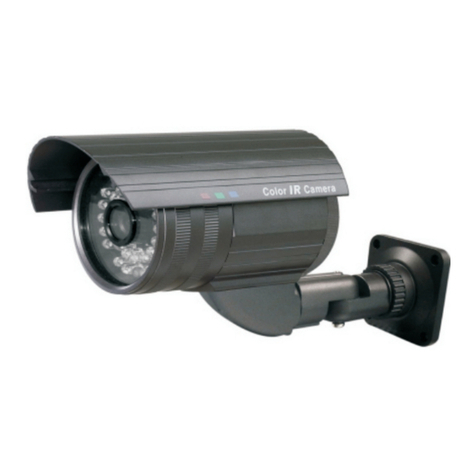
Avue
Avue AV762WDIR Guick Start Guide
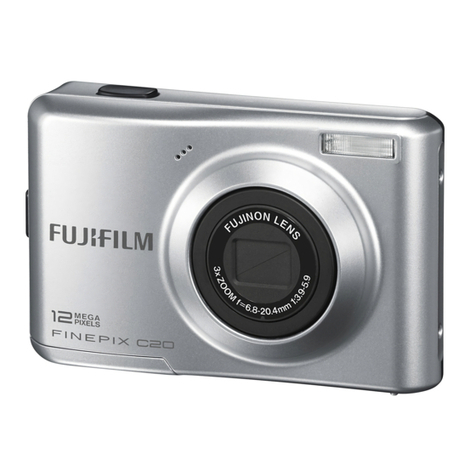
FujiFilm
FujiFilm FINEPIX C20 Series owner's manual
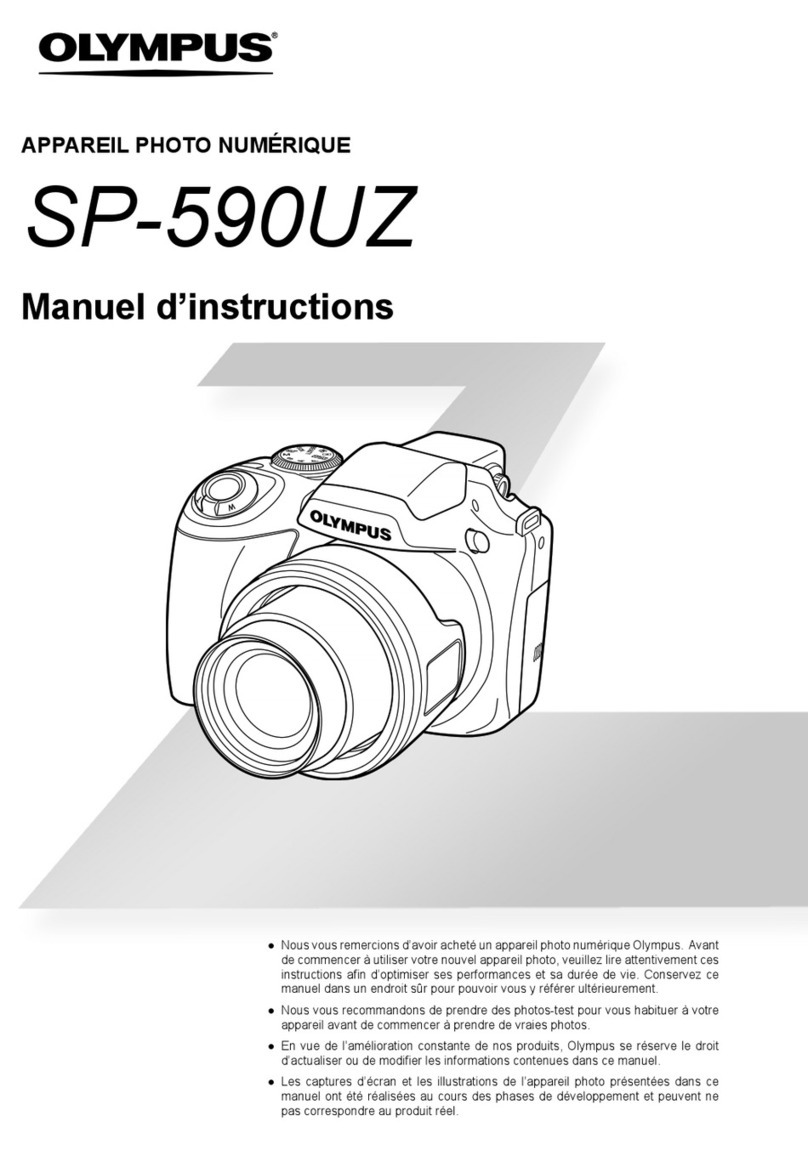
Olympus
Olympus SP590UZ - 12MP Digital Camera Manuel d'instructions
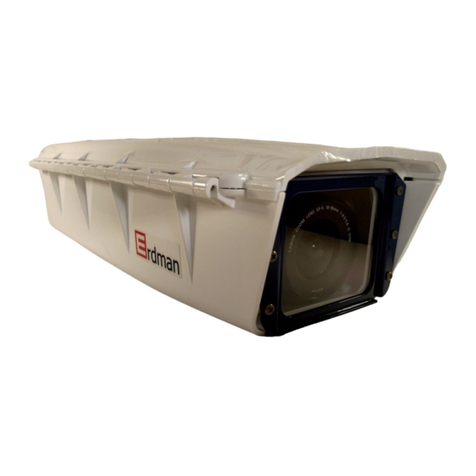
Erdman Video Systems
Erdman Video Systems MakoTL Hardware reference manual
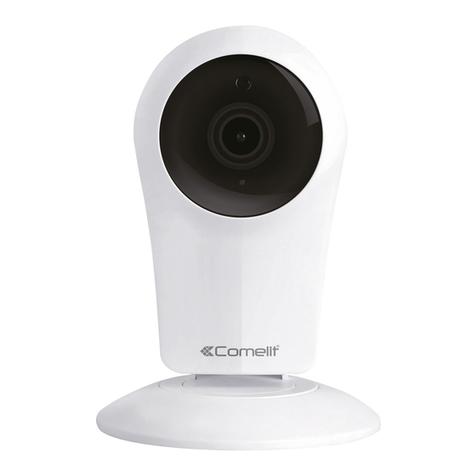
Comelit
Comelit WICCAMS02FA Technical manual
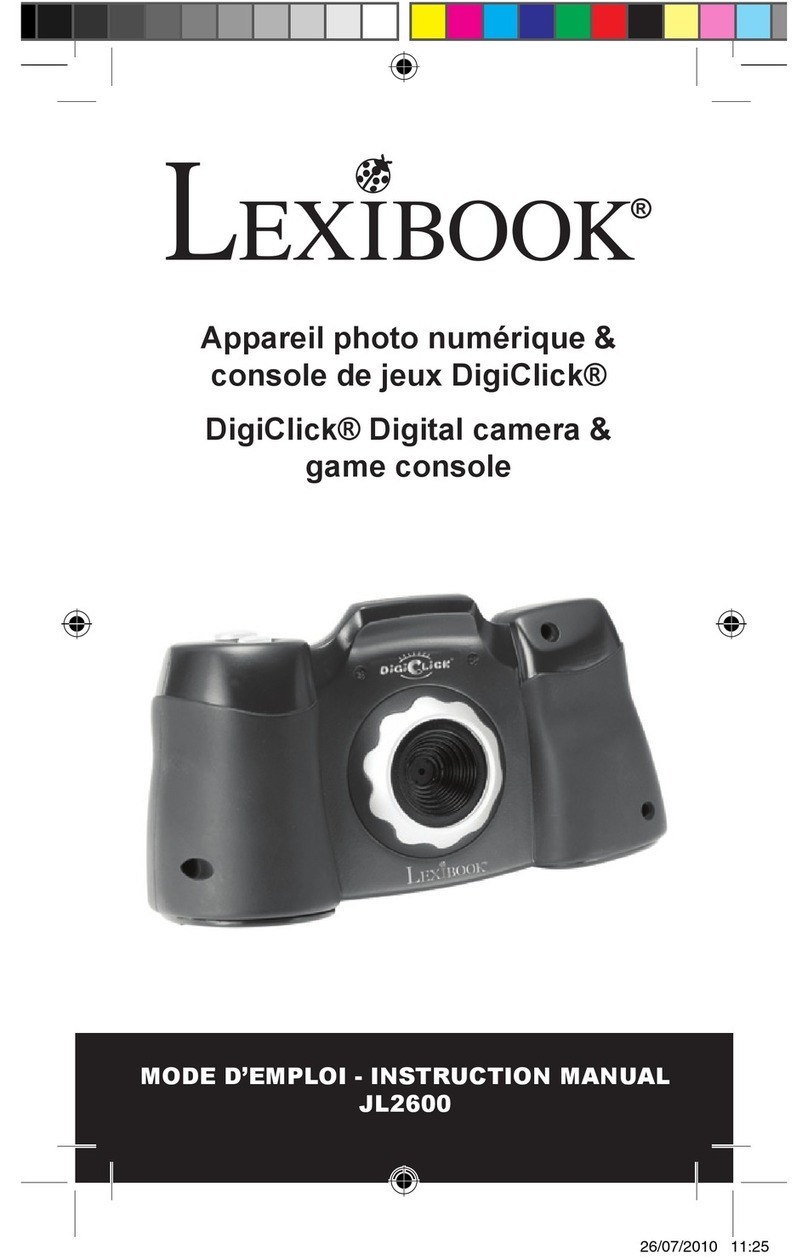
LEXIBOOK
LEXIBOOK DigiClick JL2600 instruction manual
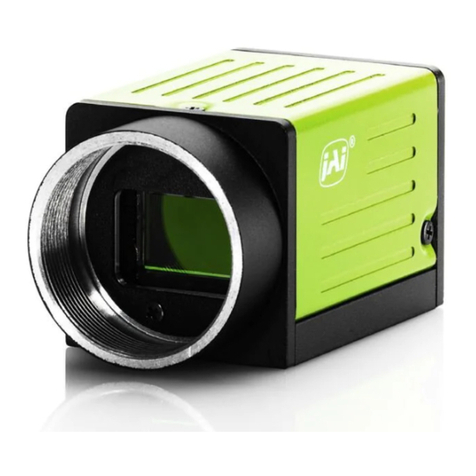
JAI
JAI GO-2400M-PMCL user manual
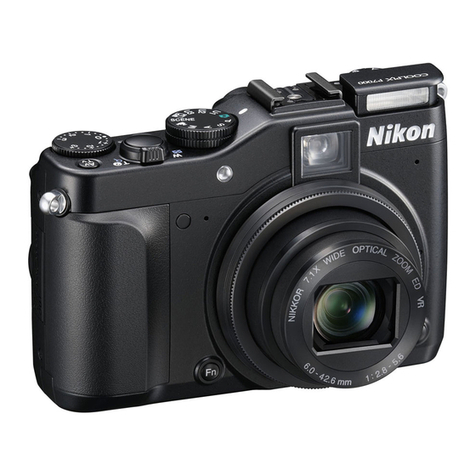
Nikon
Nikon CoolPix P7000 user manual
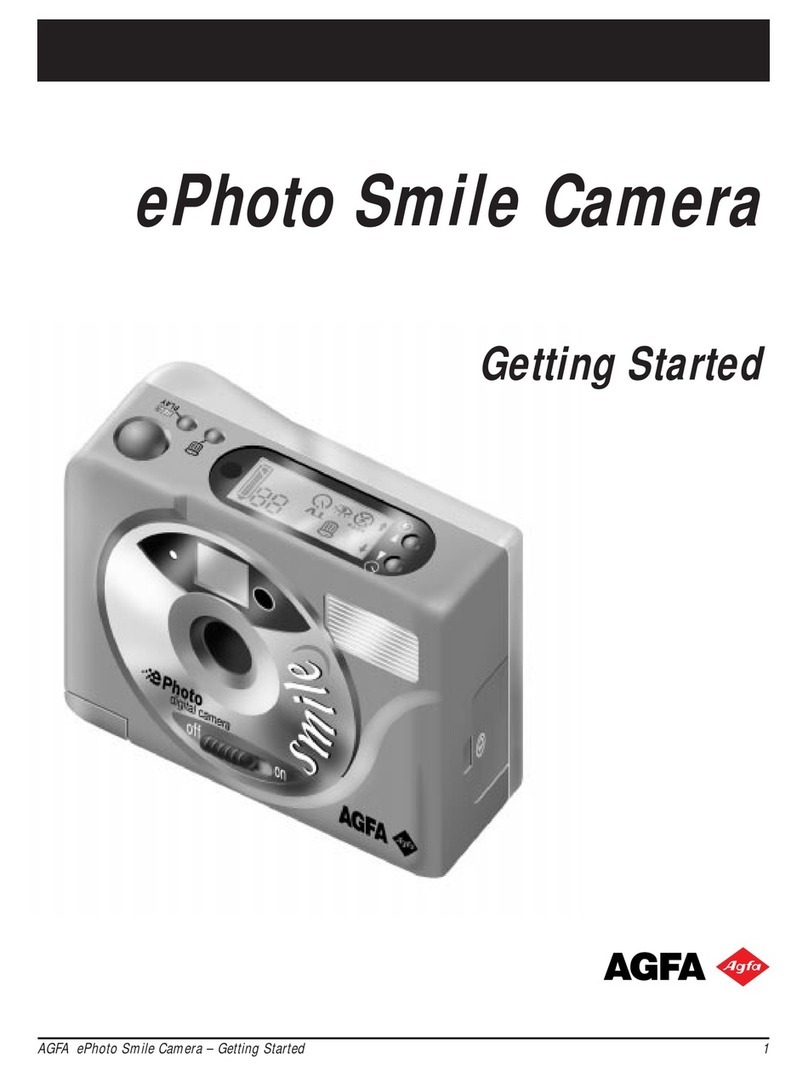
AGFA
AGFA ePhoto CL 15 Smile Getting started guide
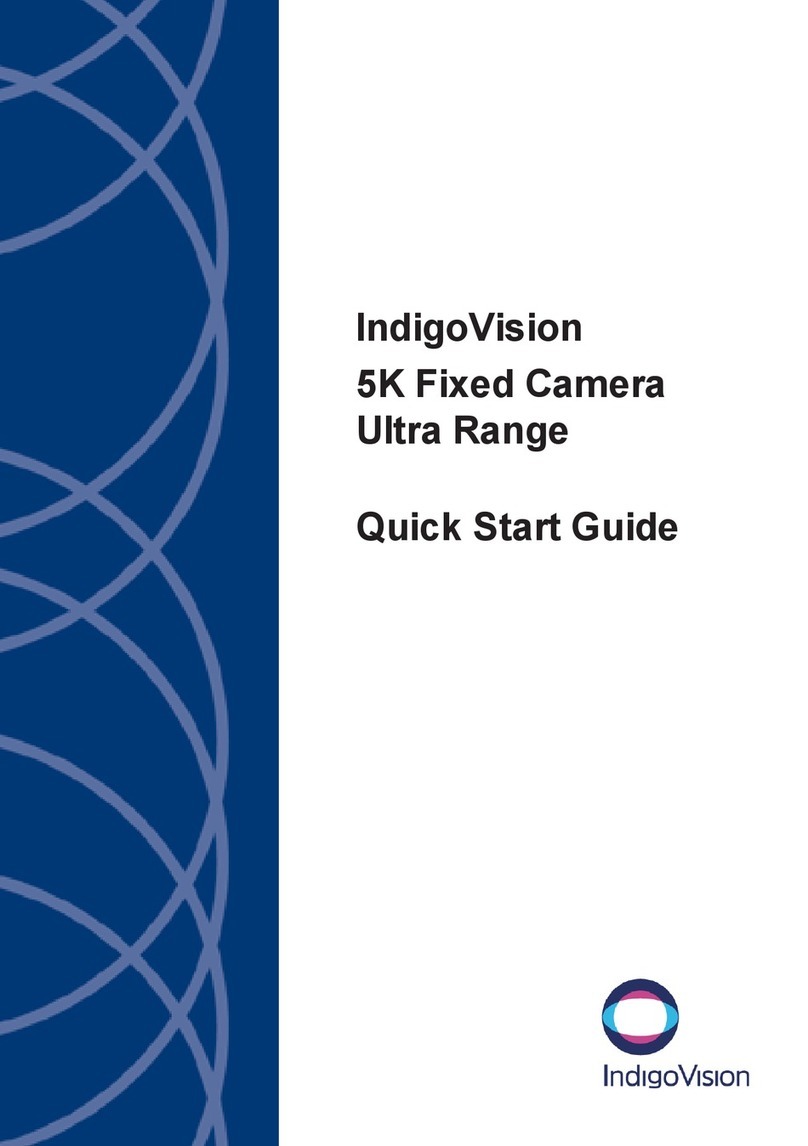
IndigoVision
IndigoVision Ultra Series quick start guide
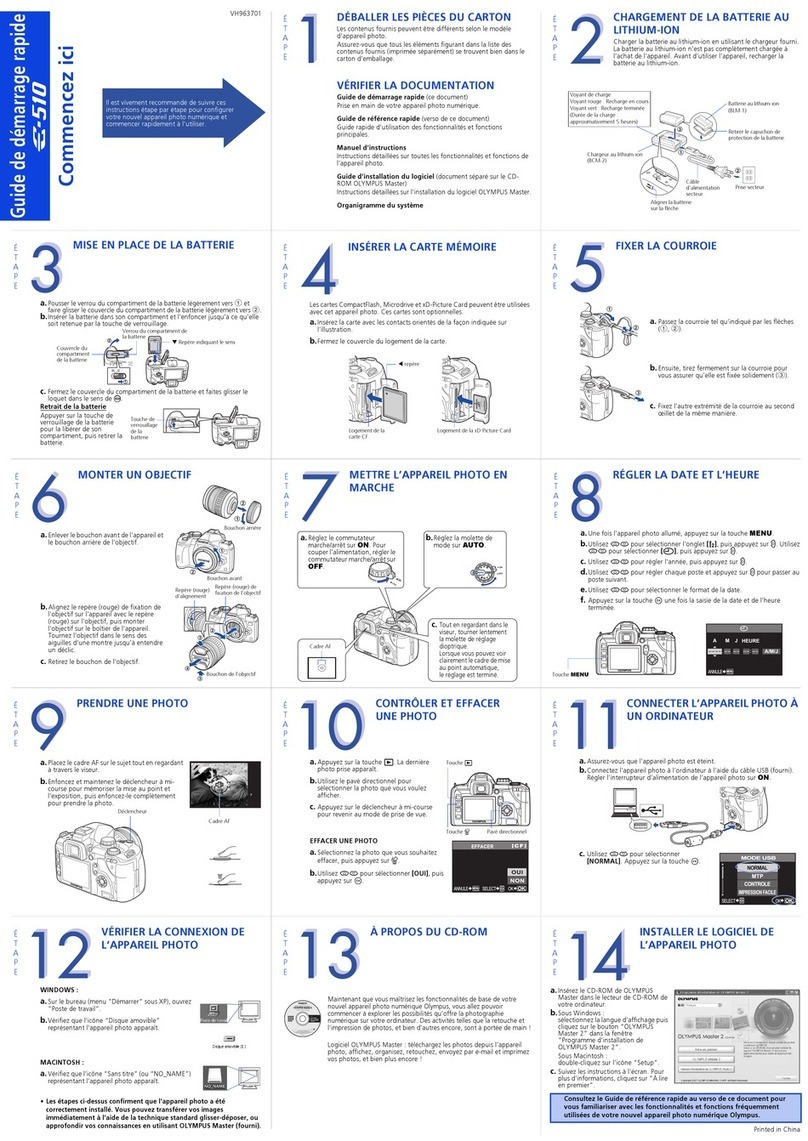
Olympus
Olympus E420 - Evolt 10MP Digital SLR Camera Guide de démarrage rapide
